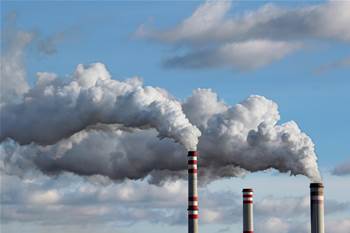The Western Australian government is building a platform for state agencies and government trading enterprises (GTEs) to self-report their CO2 output against reduction targets.
The tender to provide the ‘interactive online greenhouse gas emissions tracking and reporting system’ was issued by the Western Australian Department of Water and Environmental Regulation (DWER).
The whole-of-government platform will track approximately 100 agencies and GTEs' progress implementing individual reductions to support the state’s 2030 reduction target.
The McGowan government announced in June last year that it wants government agencies and GTEs to reduce CO2 emissions to 80 percent of 2020 levels by 2030. The target does not apply to private industry.
According to the tender documents, the 100 organisations covered by the emissions reporting system produce 7.3 million tonnes of emissions per year on average.
A handful of WA GTEs have already reported to the Commonwealth’s national greenhouse and energy reporting (NGER) scheme since 2008, such as the government-owned electricity provider Western Power.
Public sector bodies used to report to the state’s ‘system for accounting and reporting government emissions’ scheme until it was scrapped in 2012.
A functional requirement of the new solution will be the easy conversion of the data into formats required by NGER.
End users will be able to report, analyse, calculate and track their sources of emissions through an online dashboard-style user interface.
The cloud-based database will collect scope 1, 2 and 3 emissions and both energy-related emissions sources, such as gas usage and non-energy related emissions sources, such as livestock or employee travel.
Some data sources will be fed to the system automatically, such as electricity and gas usage data generated from billing data from agencies’ monthly and quarterly accounts.
The provider must ensure the data feeds are retained, emissions factors are up to date, and alerts, warnings of data discrepancies, or broken data feeds are automatically reported.
Security requirements include that all customer data is hosted in Australia, encrypted with a 128-bit key length or greater, end users only have access to their own agency’s data, and data is archived in offline backups.
Applications are open until March 22. The first six months of the one-year contract will consist of initial system scoping, design, configuration and pilot testing.
The second phase is also anticipated to take roughly six months and will involve connecting all government agencies to the emissions tracking system.
Phase three covers the operation and maintenance of the system over the remainder of the contract term. It will involve responsibilities such as assisting DWER with the administration of user licensing and assisting with the coordination and collection of agencies’ data.
The contract has four one-year extension options.



.jpg&h=140&w=231&c=1&s=0)






















